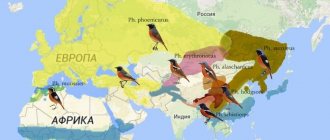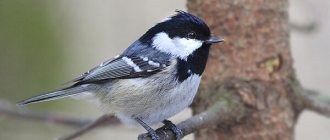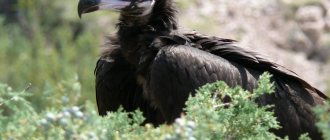The world of birds is diverse and extremely interesting. Nature has tried and worked on their appearance, adapting them to different living conditions. Among them you can find completely inconspicuous representatives, and you can also see those who have taken all the brightest colors for themselves. These are birds with a red beak and a multi-colored tail, and birds with a long beautiful tail, and very small birds with a long beak. Let's find out the names of some of them, details of their appearance, conditions of existence.
Description and features
Cardinals get their name from the bright red plumage of the males and the mask formed by the black color of the feathers around the beak and eye area. The small northern cardinal , found in Canada, the United States and Mexico, is otherwise called the red or Virginia cardinal. One of the features is considered to be the wonderful voice of a small active bird, for which it was nicknamed the Virginia nightingale.
The red cardinal cannot boast of large size. The female individual is slightly smaller than the male, whose weight rarely reaches 50 g. The maximum body length of an adult bird, including the tail, is 25 cm, and its wingspan does not exceed 30 cm.
The cardinal bird in the photo is not as expressive as in its natural environment. The ability of her feather to reflect light makes the color so rich and bright. The appearance of individuals of different sexes differs significantly. Males, called by nature to attract feathered girls with their bright appearance and singing, are unusually elegant.
Their crest, cheek area, chest, and belly are painted scarlet, and the wings and outer plumage of the tail are a darker crimson color with a slight brown haze. A black mask on a scarlet background adds masculinity. The bird's beak is red and its paws are red-brown.
Females look much more modest: gray-brown color, reddish inclusions on the feathers of the crest, wings, tail and a scarlet cone-shaped beak. The lady also has a mask, but it is not so clearly expressed: the feathers around her beak and eyes are dark gray. The young are similar in color to the female. The pupils of all cardinals are brown.
In the north of the continent lives the indigo bunting cardinal, whose plumage is a rich blue color. By the beginning of the mating season, the brightness of the color of the males increases, and when the pair has already been formed, it turns pale again.
Where is such beauty found?
The red cardinal is a bird with bright plumage and a beautiful voice. Its natural habitat is considered to be the territory of many eastern states of America; cardinals can also be found in Mexico, Canada and Guatemala.
At the beginning of the eighteenth century, Virginia cardinals were artificially introduced to Bermuda. They liked the nature there quite to their liking, so they happily live there today.
The Virginia cardinal also began to be bred artificially in California and Hawaii. The experiment was successful, the birds acclimatized well and took root.
Lifestyle and habitat
The cardinal bird lives almost throughout the entire territory of both Americas. It appeared in Bermuda only in the 18th century, when people brought several dozen individuals there and bred them artificially. Currently, the cardinals there have completely acclimatized and are reproducing on their own.
The habitat of the northern cardinal is gardens, parks, forested areas, and bushes. In urban areas it is also common, which is due to the absence of excessive timidity in the bird’s character.
This sociable red-feathered bird easily makes contact with humans. From the sparrow she inherited fearlessness, impudent behavior, and thieving habits. It will not be difficult for a cardinal to fly into an open window of a house, feast on everything he finds edible there, and also take food with him.
The sounds produced by the Virginia cardinal are varied. This is a very talkative bird. When communicating calmly with each other, cardinals make soft chirping sounds. The iridescent trills characteristic of males are reminiscent of nightingale songs. And the quiet singing of females is also melodious, but not so varied. When birds are frightened, their chirping becomes a sharp, loud cry.
Listen to the voice of the red cardinal
One of the distinctive features of cardinals is their excellent memory, acquired through many centuries of evolution. They are able to remember all their numerous stashes of pine seeds, which are collected in September and hidden in places known only to them to eat their favorite food all winter.
So, during September, a cardinal can hide up to 100 thousand pine seeds in the rocky environs of the Grand Canyon, which covers about a hundred kilometers, where the red bird likes to settle. Without this ability to remember stashes, the bird will not be able to survive the long winter. Even if the landscape changes under the snow, she finds about 90% of the hidden seeds. The remaining 10% germinates, renewing the forests.
A little about the black water cutter
The black skimmer has an unusual bill not only among all shorebirds, but also among birds throughout North America. Its uniqueness is not only that it is very thin and colorful (red and black strokes), but also that its lower part is longer than the upper.
This feature is very important for the process of feeding the cutwater. How does this happen? Birds fly over the water at high speeds, while the lower part of the beak cuts a channel along the surface of the water and descends into the water. When a fish is in it, the top of the beak snaps shut. Such an extreme method of obtaining food, of course, does not come without risks. Black skimmers sometimes have collisions with certain underwater objects.
In addition, these birds also use their beaks to kill seagulls that have the courage to invade their nesting sites.
The black, red-billed skimmers are the only bird species in South and North America with this feeding technique.
Kinds
Different types of cardinals are common in certain areas of the continent. Thus, the Virginia cardinal - the most famous and numerous species - is found mainly in Canada, the USA, Guatemala and Mexico.
Green lives in the territory of modern Uruguay and Argentina. Eastern South America is the territory of the gray cardinal. But the handsome indigo can be found only in the north of the continent, where in addition to it, red and purple (parrot) species are common.
Eminence grise
The gray cardinal is otherwise called the red-crested one. Not only the crest of representatives of this species is red, but also the mask around the beak, eyes, as well as a spot from the throat to the chest in the form of a flowing blot.
The back of the bird, its wings and the upper part of the tail are black and gray, the belly and breast are dirty white. The heterosexual red-crested cardinals are virtually indistinguishable. But if a couple sits side by side, then the female can be distinguished by a less intense head color, not as curved as the male’s, a more elegant beak and the inability to reproduce trills.
The gray cardinal prefers to settle in bushes located along river banks. The pair builds characteristic bowl-shaped nests, placing them on the upper branches of densely growing bushes. The diet of red-crested cardinals consists of insects, tree seeds and grasses.
A clutch of four bluish eggs is incubated by a lady for two weeks. The hatched chicks are fed by both father and mother. Seventeen-day-old babies leave the nest, after which their parents take care of them and feed them for about another 3 weeks.
Parrot cardinal
In the cardinal family, the purple cardinal is the smallest species, which was first described by Napoleon's nephew, ornithologist Charles Lucien Bonaparte. The area where this bird lives is limited to Venezuela and Colombia.
A total of 20 thousand km² of habitat are subtropical and tropic, where a dry climate predominates. At the same time, the purple cardinal does not like to live in dense forests, preferring bushes and sparse forests. The bird of the species has a wingspan of only 22 cm with a body length of up to 19 cm and a weight of up to 30 g.
When excited, the purple cardinal spreads its crest like a parrot. The beak also resembles this bird - hence the name of the species. The male is distinguished by purple plumage with a characteristic black mask. Females are gray-brown with sparse purple spots on the thighs and crest.
Their belly and chest are yellowish-orange in color, and the pale mask ends at the back of the head. Unlike red cardinals, the beak of representatives of the parrot species is black and gray. The same color on the paws.
The bird's activity increases in the morning and in the evening. The couple, having chosen a site for settlement, selflessly protects it from the incursions of their brothers and other competitors. Representatives of the parrot species differ from other cardinals in their preference for plant foods.
They also eat insects, but very few. The diet consists mainly of seeds, grains, some fruits, berries and cactus fruits. The cardinal parrot, having matured by 12 months, chooses a mate, which remains faithful throughout its life.
Green cardinal
The habitat of the green cardinal is the temperate latitudes of the South American continent, i.e. southern territories of Argentina. The male is a deeper green color than his mate. The green cardinal's mask consists of two broad yellow stripes under the crest and beak.
Pairs feel great in captivity, reproduce easily and are not afraid of low temperatures. The clutch consists of 3-4 light gray speckled eggs. The newly hatched chick is dark brown in color with brown down. But on the 17th day of life, when the time comes to leave the nest, the color of the feather becomes similar to the mother's pale green.
Indigo Bunting Cardinal
This is another species belonging to the cardinal family. The songbird of North America is only 15 cm long from beak to tail tip. During the mating season, the male acquires a bright blue plumage color. Moreover, their wings and tail are dark with a blue border, and above the beak there is a black stripe resembling a bridle.
With the onset of winter, the color of the males becomes paler, the belly and the inside of the tail acquire a whitish tint. Females have brown feather color with stripes on the breast and yellowish-brown streaks on the wings.
The cardinal bunting's nest is also bowl-shaped, made of thin branches, grass, feathers and animal hair. The color of a clutch of 3-4 eggs is light blue.
The habitat depends on the season: in the summer it is Southeast Canada and the eastern United States, and in the winter it is the West Indies and Central America.
The cardinal bird has long been the hero of numerous American legends. Her images and figurines decorate homes during Christmas and New Year. Along with Santa, snowmen and reindeer, the bright red-feathered bird represents a Christmas symbol in American culture.
Legends about the stork
The name of the bird with a red beak and white plumage appears in many beautiful ancient legends and tales. Since time immemorial, the white stork has been considered a rather revered bird, and it has been associated with prosperity, well-being, good luck and a happy life. There are also many good tales and legends associated with him, both in the East and in Europe, and everywhere he acts as a protector from any evil spirit and as the keeper of the family hearth, bringing happiness.
It was believed that a family whose house a stork flies to will definitely have a long-awaited child, and therefore many families without children relied on the help of this bird.
According to folk legends, God endowed this bird with white plumage, and the devil with black wings, which is why it symbolizes the endless struggle between good and bad, between good and evil.
Nutrition
The diet of the Virginia cardinal, in addition to pine seeds, consists of the fruits of other plants, the bark and foliage of elm. Numerous insects can also serve as food. Among them: beetles, cicadas, grasshoppers. In nature, birds can feast on snails, elderberries, cherries, junipers, strawberries, and grapes. They will not refuse corn and other grains that are in the stage of milk maturity.
In captivity, cardinals need to be given the opportunity to exercise more because they quickly become overweight. You can diversify the food for them with locusts, Madagascar cockroaches, and crickets. Greens, fruits and berries, buds and flowers of fruit trees will also not be superfluous.
Finches - care
- Alexandrian parrot
- Why does a cat need a mustache?
- Rescue dogs
- Hypoallergenic cats
- Why does a cat need a tail?
- Chinchilla
Since pets are exotic, keeping them requires taking into account some features:
- The cage must be placed in a place with good lighting. Drafts and batteries located nearby are prohibited.
- The ideal daylight hours are 12-15 hours. It is important that the finch is exposed to ultraviolet radiation for 45 minutes every day.
- In the warm season, keeping finches at home involves taking the cage out to the balcony or garden for several hours. It needs to be placed so that the bird can choose whether it wants to be in the shade, or whether it is better to move to the sun.
- It is of great importance to maintain cleanliness in the cage, which must be cleaned every other day, changing the bedding and removing dirt. The feeder and drinker should be washed every morning. From time to time the entire frame should be disinfected.
- If you have finches, their care and maintenance will involve maintaining a stable temperature. The optimal value is from +16 to 23 °C. They tolerate a decrease in temperature better than an increase. Humidity should be at an average level.
- Finches love water treatments, so keeping them involves installing a small trough in the cage. You need to pour clean water at room temperature. The liquid level should not be more than 1.5 cm. It is better to clean the bath after each procedure.
- Molting occurs throughout the year and lasts on average 20 days. At this time, care needs to be supplemented with mandatory plant or mineral supplements. It is also necessary to provide food of animal origin.
Diseases of finches also deserve special attention. They can be divided into two categories. The first includes diseases that affect all birds: salmonellosis, coccidosis, cholera and others. The second group includes specific diseases unique to finches:
- Tracheal mite. It is contagious and one of the most common diseases. Symptoms include shortness of breath, coughing and sneezing. Males lose their voice.
- Non-communicable diseases arise due to poor living conditions and insufficient care. For example, due to a lack of vitamins, hypovitaminosis and many other diseases develop. Due to cramped cells, physical inactivity may develop. Illness is indicated by lethargy, untidiness, frequent scratching, and so on.
Reproduction and lifespan
During the mating season, the trills of males become especially loud and melodic. The groom puffs up his tail, sticks out his red chest, shows his girlfriend first his left side, then his right, turning and flapping his wings.
Having formed a pair, the female begins to build a cup-shaped dense nest on a low tree or in the upper branches of bushes, and the future father helps her. The clutch consists of 3-4 eggs, which have a greenish or bluish tint interspersed with gray or brown.
While the female incubates the clutch, the male entertains her with songs, and she sometimes quietly sings along. He feeds his chosen one, bringing insects and seeds. He drives away other birds with loud chirping and selflessly protects the nest from attacks by predators. Occasionally, the mother may leave the nest, then the male sits on the clutch.
After 12-14 days, the chicks appear. Their parents feed them exclusively insects. Around the 17th day, the chicks leave their father's nest, after which the female begins the next clutch, and the male feeds the previous offspring.
In their natural environment, red cardinals live from 10 to 15 years. In captivity, with proper maintenance, their life expectancy can increase to 30 years.
Legend No. 2
There is another legend according to which the red cardinal is the daughter of the Sun. One day the Sun was offended by people because when they looked at him they always squinted. Out of resentment, it began to fry so much that many people died.
A sorcerer intervened in the situation. He said that in order for everything to work out, the Sun must be killed. For this purpose, he turned two men into snakes and sent them to the luminary. But it turned out that it was not the Sun itself that suffered from the snake venom, but his beloved daughter. Then the luminary was offended and left the sky forever.
The heat subsided, but complete darkness came, the people were again unhappy and went to the sorcerer. He said that in order for the Sun to forgive them, it is necessary to return his beloved daughter from the world of the dead. The sorcerer gave the people a special box to carry it, and ordered them under no circumstances to open the lid on the way. People kidnapped the daughter of the Sun from the dead, put her in a box and carried her back, but on the way she began to complain and cry that she was suffocating. Then the porters opened the lid for a second to let in some air, and then slammed it shut, but this did not help.
When they came to the luminary, it turned out that the box was empty. Then the people remembered that while they were opening the lid, a small beautiful bird fluttered around them. This is exactly what the girl turned into.
Taming finches
If you want your finch to become completely tame, it is recommended that every time you approach the cage to change food or water, try not to make sudden movements so as not to scare the bird, avoid harshness, and try not to speak loudly. Your affectionate and caring treatment will do their job, and the finch will very soon get used to you and stop being afraid of you. Find out how to tame a parrot here - you can use these tips and tricks to tame finches. Once this happens and initial contact has been made, you will finally be able to hear the finches singing. And, although the sounds they make are not for everyone, it is very nice to know that with such singing the birds show how much they trust you.
How do finches sing?
The male uses his vocal abilities to attract a female. His “arias” are aimed at creating a couple in order to later build a nest with his chosen one and raise offspring. Owners' opinions about their singing vary: some claim that their birds sing beautifully and loudly in the morning, so that there is no need to even set an alarm clock. Others find the singing of finches quiet, more reminiscent of chirping. A representative of the zebra variety sings a monotonous, quiet and somewhat dull song.
We buy birds
How to choose? If you decide to start breeding them or just have a few birds at home, you need to take a responsible approach to choosing and purchasing finches. Keeping and breeding, as well as the well-being and health of birds, directly depends on the condition in which you purchase them.
When purchasing, first of all, you need to pay attention to the activity of the bird and its fatness. If the finch is frail and sluggish in its movements, this is the first sign of illness. Such birds may not survive adaptation to their new place of residence. A healthy bird is active, with clear springy movements and a ringing voice.
It should be quite natural for the seller to ask to catch the finch and let it be examined by the buyer. By holding the bird in your hands, you can determine its degree of fatness. Thin and bony birds, or, conversely, too fat, are already a deviation from the norm. It is better to refuse to buy such finches.
The feathers should be free of signs of parasites or mites. By spreading the feathers, you can see the color of the bird's skin. It should be light, with a slight pink tint. A yellowish or grayish tint indicates that the bird is sick. It is very important not to neglect these tips for choosing a finch. Care and maintenance, if the birds are healthy, will only bring pleasure to both the professional and the beginner.
Video
Breeding
Finches are one of those birds that still bear offspring while living in cages.
So, the first thing you need to pay attention to when breeding finches at home is the sufficient length of daylight hours. The second is the presence of a normal cage and nesting house. If you place a nest in a cage, the birds’ reflex to reproduction will work, and the instinct to procreate will awaken. If you want to reproduce, go to the veterinary pharmacy for a nest, or better yet, two. Experienced poultry farmers recommend placing two nests at once.
The most suitable age for breeding finches is from 1 to 5 years. Pay attention to the subclavian cavities, there may be ticks and other not very pleasant parasites. In order for a couple to form, it is necessary to choose the right female and male. They must be ready: the male is active and sings loudly, and the groom sings more often than usual. The female must prepare for nest construction: carry and store blades of grass. And if she takes poses that invite the male to mate, then take her without a doubt - you won’t regret it. The birds are picking each other's feathers - this means that a pair has formed and will soon be replenished. When breeding and propagating guldin finches, follow the above tips. In principle, they are suitable for all finches, the only thing I would like to clarify is that for these types of birds the cages are 1 meter in length.











